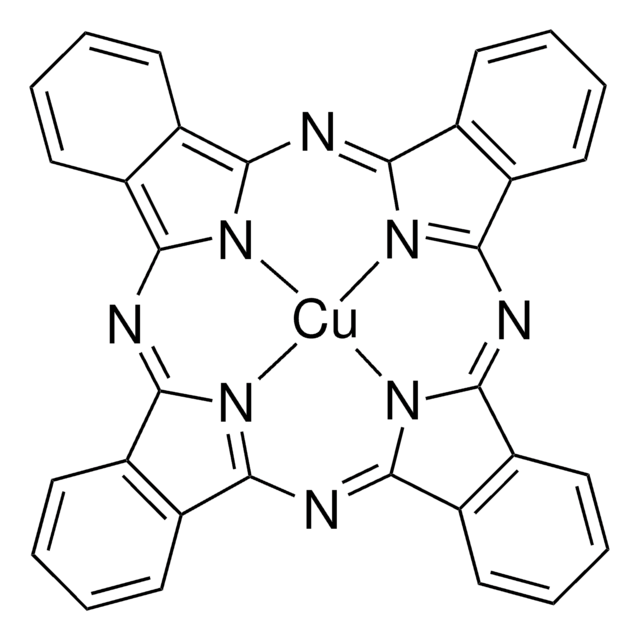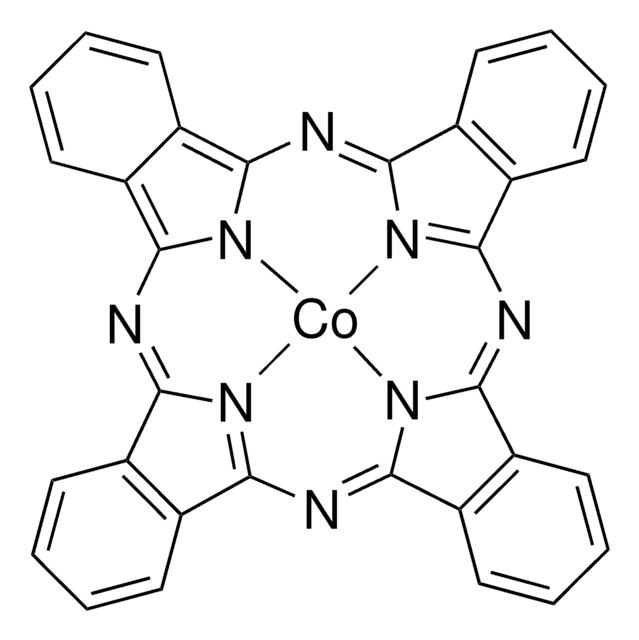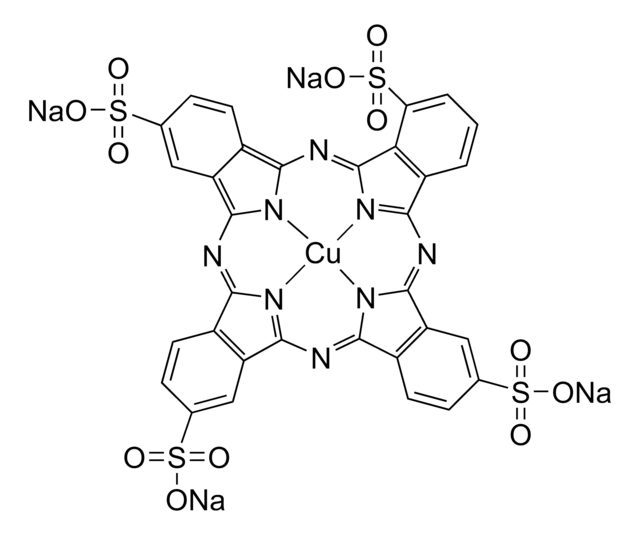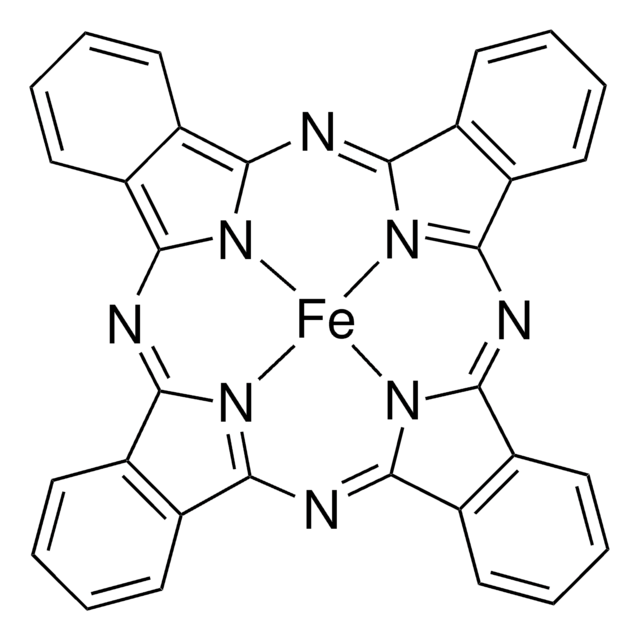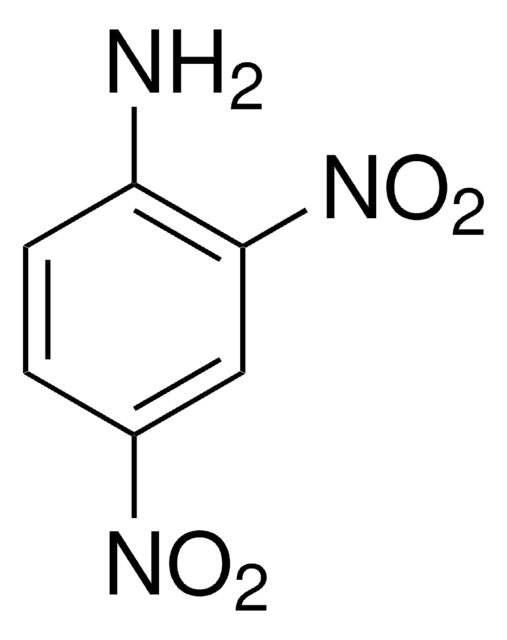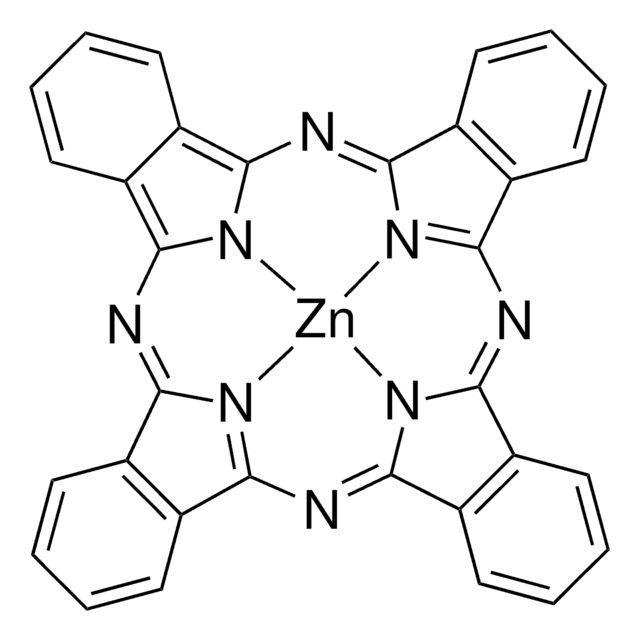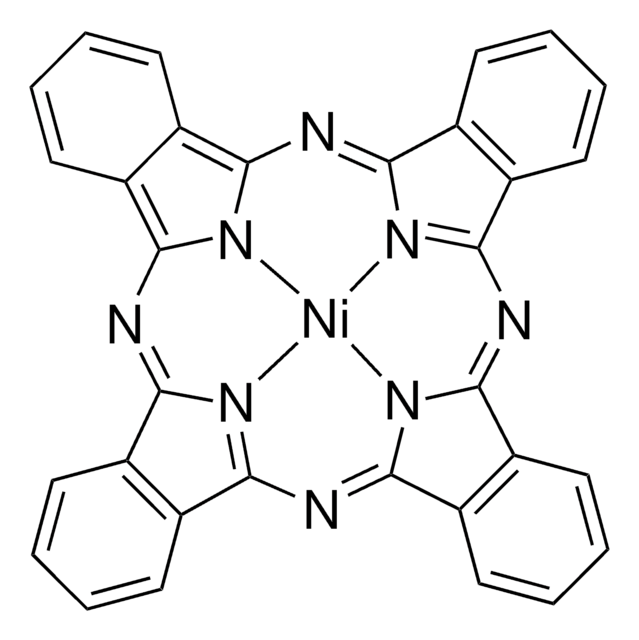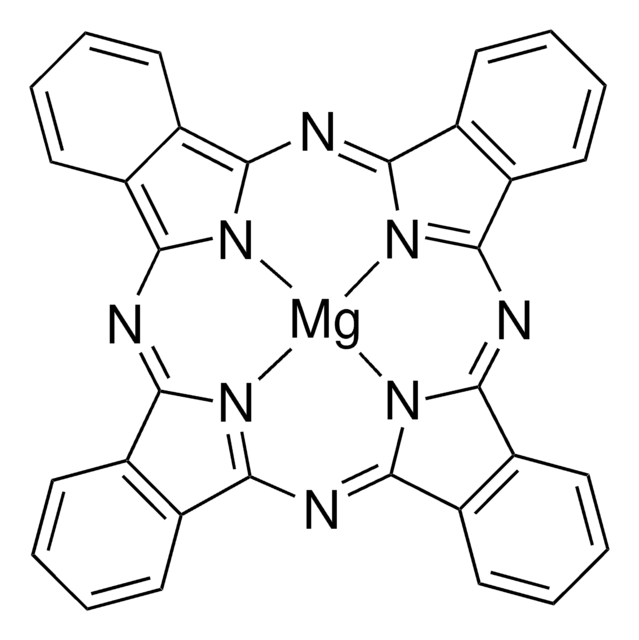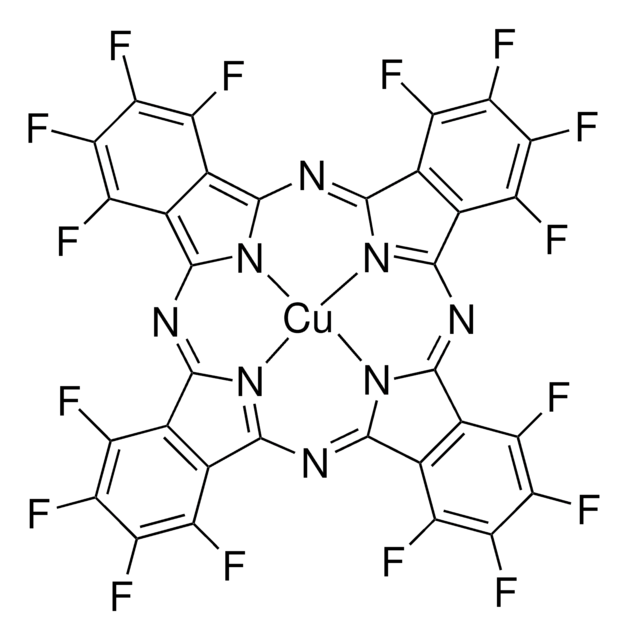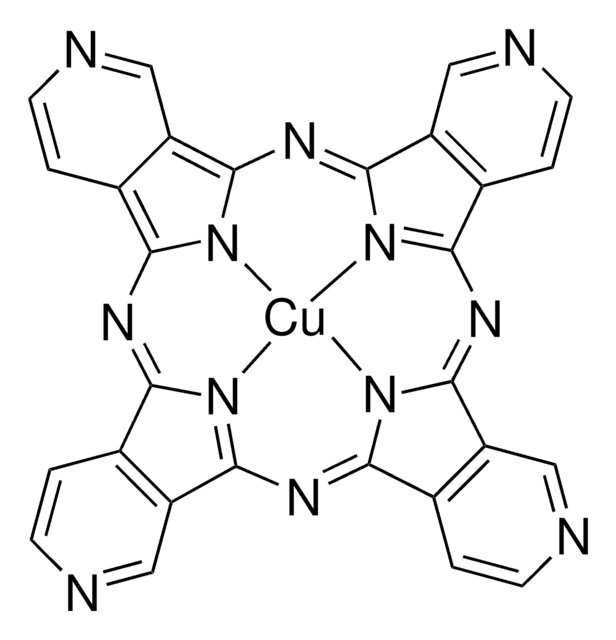252980
Copper(II) phthalocyanine
β-form, Dye content 90 %
Sinónimos:
CuPc
About This Item
Productos recomendados
composition
Dye content, 90%
λmax
678 nm
OLED device performance
ITO/CuPc/NPD/Alq3/C60/Mg:Ag
ITO/CuPc/NPD/Alq3/LiF/Al
ITO/CuPc/NPD/CBP:FIrpic (6%)/BAlq3/LiF/Al
OPV device performance
ITO/CuPc/PTCDA/In
ITO/PEDOT:PSS/CuPc/C60/BCP/Al
SMILES string
c1ccc2c(c1)C3=NC4=[N@@H]5C(=Nc6n7c(N=C8c9ccccc9C%10=[N@@H]8[Cu]57N3C2=N%10)c%11ccccc6%11)c%12ccccc4%12
InChI
1S/C32H16N8.Cu/c1-2-10-18-17(9-1)25-33-26(18)38-28-21-13-5-6-14-22(21)30(35-28)40-32-24-16-8-7-15-23(24)31(36-32)39-29-20-12-4-3-11-19(20)27(34-29)37-25;/h1-16H;/q-2;+2
InChI key
XCJYREBRNVKWGJ-UHFFFAOYSA-N
¿Está buscando productos similares? Visita Guía de comparación de productos
Storage Class
11 - Combustible Solids
wgk_germany
nwg
flash_point_f
Not applicable
flash_point_c
Not applicable
ppe
Eyeshields, Gloves, type N95 (US)
Certificados de análisis (COA)
Busque Certificados de análisis (COA) introduciendo el número de lote del producto. Los números de lote se encuentran en la etiqueta del producto después de las palabras «Lot» o «Batch»
¿Ya tiene este producto?
Encuentre la documentación para los productos que ha comprado recientemente en la Biblioteca de documentos.
Los clientes también vieron
Artículos
While dye sensitization as the basis for color photography has been accepted for a very long time,1 attempts to use this principle for the conversion of solar light to electricity generally had resulted only in very low photocurrents, below 100 nA/cm2.2
Nuestro equipo de científicos tiene experiencia en todas las áreas de investigación: Ciencias de la vida, Ciencia de los materiales, Síntesis química, Cromatografía, Analítica y muchas otras.
Póngase en contacto con el Servicio técnico